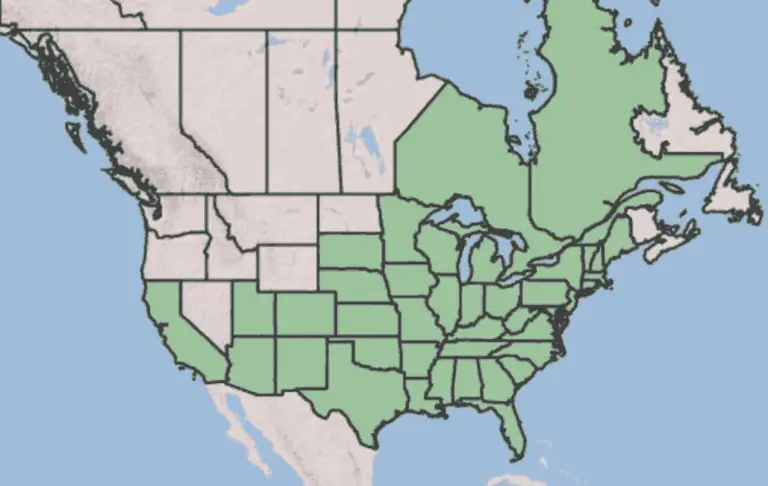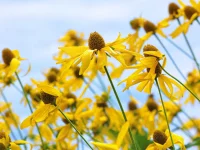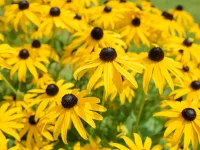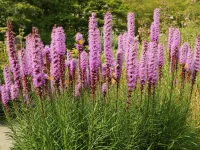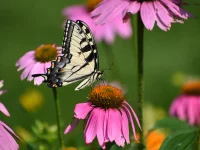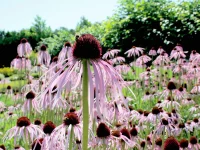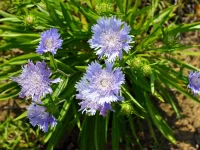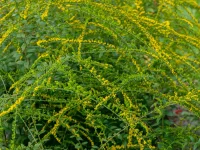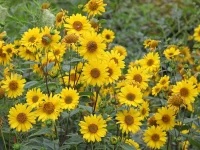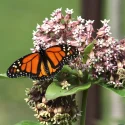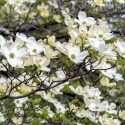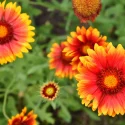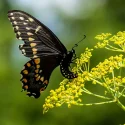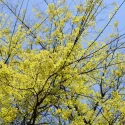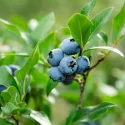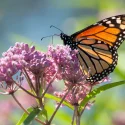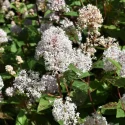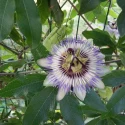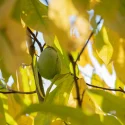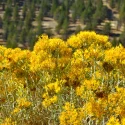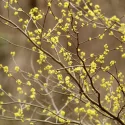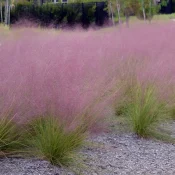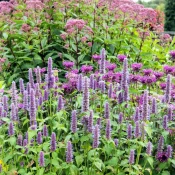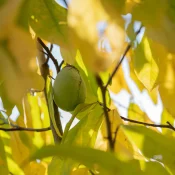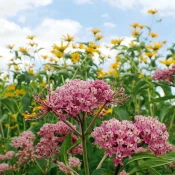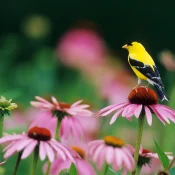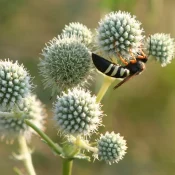Butterfly Weed
Butterfly Weed is a must for any sunny native garden. First off, Butterfly Weed is a type of milkweed, which is the host plant for Monarch butterflies. Secondly, Butterfly Weed is Cheeto-colored bright orange—a rare flower color! You can plant seeds in the spring and have flowers in the summer, making them easy for beginners. Finally, Butterfly Weed is one of the shortest milkweed species, perfect for borders. Scroll on for more planting tips.
- Full Sun, Part Sun
- Short (under 3')
- Summer flowers
- Host Plant
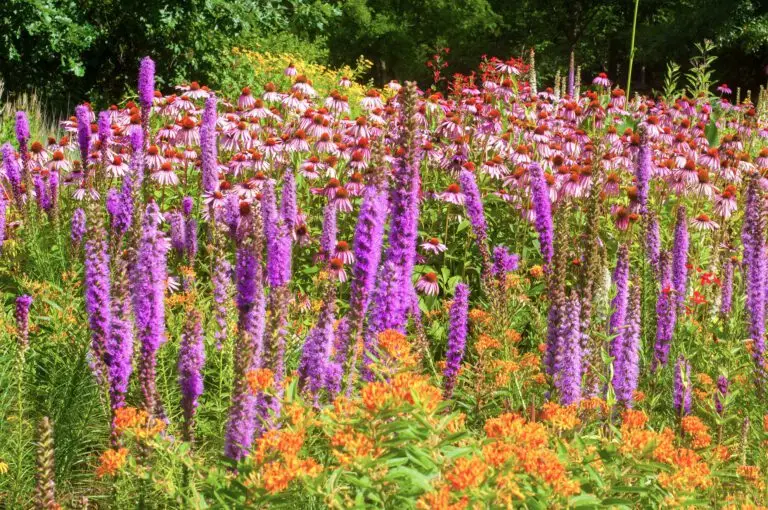
Butterfly Weed is a type of milkweed
Butterfly Weed is one of the 100+ native species of milkweed, which is a flower native to North America and South America. These 100+ flowers are all within the Asclepias genus.
Monarchs only eat one thing: milkweed.
When a plant is the go-to source for food or a place to lay eggs for certain insects or animals, it’s called a host plant. These plants are essential because they support the life cycle of specific species, providing what they need to survive and thrive.
What is a host plant?
A host plant is a specific plant that a bug, butterfly, or caterpillar eats, lives on, or lays its eggs on.
Now you may be wondering: why do Monarchs only eat milkweed?
Milkweed gives Monarchs superpowers
Almost all milkweeds are known for their milky-white sap, which is toxic to all creatures except the Monarch. Monarch butterflies have evolved to eat milkweed and safely hold the toxicity within their bodies. When a predator eats a Monarch caterpillar or butterfly they get sick (and sometimes die.)
Birds and other wildlife have evolved to see a Monarch and understand this is not something to eat. (It helps that Monarch caterpillars and butterflies have evolved to look so distinct.) Monarch caterpillars go ahead and chomp away, knowing milkweed protects them.
Strangely, almost all native milkweed has milky white sap except Butterfly Weed. The sap within Butterfly Weed still holds some of that toxicity, but the color is not white.
Looking to learn more? Head over to our overview on the powers of host plants, or check out our list of native host plants for butterflies.
Where is Butterfly Weed native?
Butterfly Weed has a HUGE native range that covers 70% of the United States and most of Canada. If you see your state here in green, Butterfly Weed is native in your area.
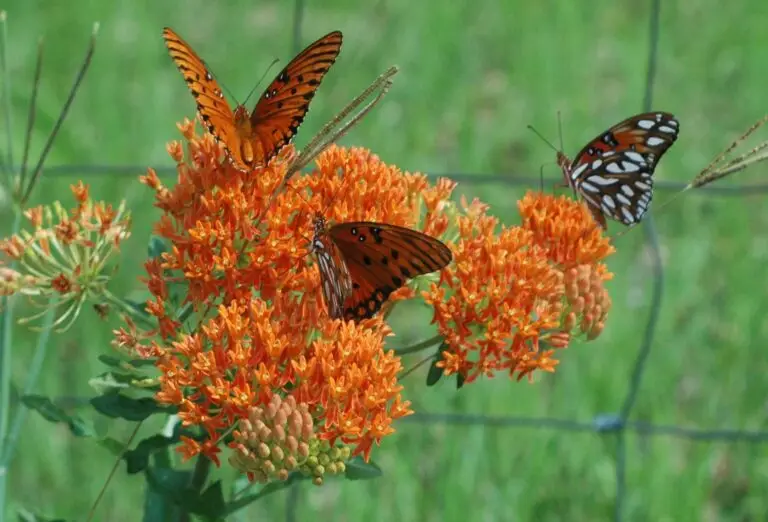

Why is it called Butterfly Weed—what makes it a weed?
Butterfly Weed is this plant’s common name, or a name given by previous generations. Most common names come from the early European colonists who named what they found in North America.
As Uli Lorimer, head of the Native Plant Trust said on The Native Plant Podcast, this dismissive common name comes from a “colonist mindset” on non-crop plants. If it wasn’t edible and got in the way of farming, it was a ‘weed.’
Explore more in our collection, Beautiful Native Plants with Terrible Names, including Tickseed. And common names change! Let’s rename ‘milkweed’ to ‘Monarch Milkflower.’
How to grow Butterfly Weed
Growing this plant is exceptionally easy from seed, and small plants are typically carried at local plant nurseries in the spring.
No pesticides or herbicides
Avoid using pesticides or herbicides near milkweed plants, as they can harm the monarch butterflies and caterpillars that rely on the plant.
Plant at least five plants (if you can)
The more Butterfly Weed plants you plant, the easier it will be for mom Monarchs to find and lay their eggs and for the larvae to have enough food and shelter to survive. In general, plant at least five individual plants in an area if you can.
Butterfly Weed is deer-proof
Deer do NOT eat Butterfly Weed. If you’re worried about deer nibbling your garden, planting Butterfly Weed is good native gardening choice.
How to grow Butterfly Weed from seed
One amazing thing about Butterfly Weed is that seeds planted in the spring can flower later that summer. This is somewhat rare for native flowers planted from seed (most take the first summer to put down roots and flower the second year.)
800-mile tip for seeds and planting
A big tip for picking seeds is to try to buy or obtain seeds from places that are within 800 miles of where you live—the closer, the better. This ensures that the seeds you’re buying are suited for your area (Butterfly Weed seeds from Maine are probably not the best seeds for a garden in California.)
Local blooms, fewer glooms
Find native plants near you
Local plants and seeds—grown within 800 miles—are best suited for your garden. This also fosters cross-pollination among locally grown plants, enhancing their resilience for generations to come. Stay local for a happy garden!
Butterfly Weed seed sellers
Here are some online seed sellers (alongside their locations) that sell Butterfly Weed seeds:
- Johnny’s Seeds (Winslow, Maine)
- Vermont Wildflower Farm (Vermont)
- Eden Brothers (Arden, North Carolina)
- Roundstone Native Seed (Upton, Kentucky)
- Ohio Prairie Nursery (Hiram, Ohio)
- Prairie Nursery has two kinds: one for clay soil and one for non-clay soil (Westfield, Wisconsin)
- Native American Seeds (New Braunfels, Texas)
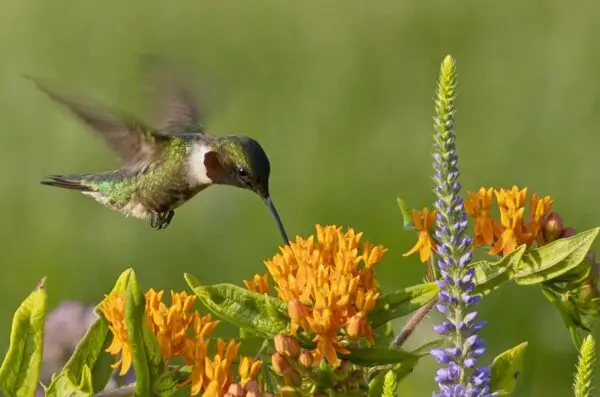
True story: 4-year-olds can plant Butterfly Weed from seed
As a testament to how easy native plants are to grow, I gave my four-year-old nephew a packet of Butterfly Weed seeds in April (I live in the Philadelphia area.) I showed him how to poke his finger into the dirt alongside our driveway and drop a seed in. Then I stood back and let him go to town. I figured it was a worthy $3 experiment.
Two months later: Butterfly Weed was blooming alongside the driveway. It’s still blooming three years later.
If a four-year-old can easily plant Butterfly Weed from seed, you can too.
What are good pairings for Butterfly Weed?
There are lots of other native plants that are great to pair with Butterfly Weed—including other milkweed species! Here are some great native flowers to plant alongside Butterfly Weed:
And that concludes our love letter to Butterfly Weed! This is a native flower that’s part of the milkweed family. Milkweeds like Butterfly Weed are crucial for helping Monarch populations survive because milkweeds are host plants for Monarchs. Butterfly Weed is so easy to plant from seed, and seeds planted in the spring will return flowers later in the summer. Their Cheeto-level of orange brightness is a favorite of hummingbirds, too. Plant 5+ and get your zoom lens ready for the wildlife pictures. Happy planting!
Looking to meet other native milkweeds? Head over to our Beginner’s Guide to Native Milkweed and meet a few more.
Sources
- Nelson, Gil. Best Native Plants for Southern Gardens: A Handbook for Gardeners, Homeowners, and Professionals, (2010).
- Harstad, Carolyn. Go Native! Gardening with Native Plants and Wildflowers in the Lower Midwest. (1999), 209-210.
- Pyle, Robert Michael. Gardening for Butterflies: How You Can Attract and Protect Beautiful, Beneficial Insects. (2016), 110.
